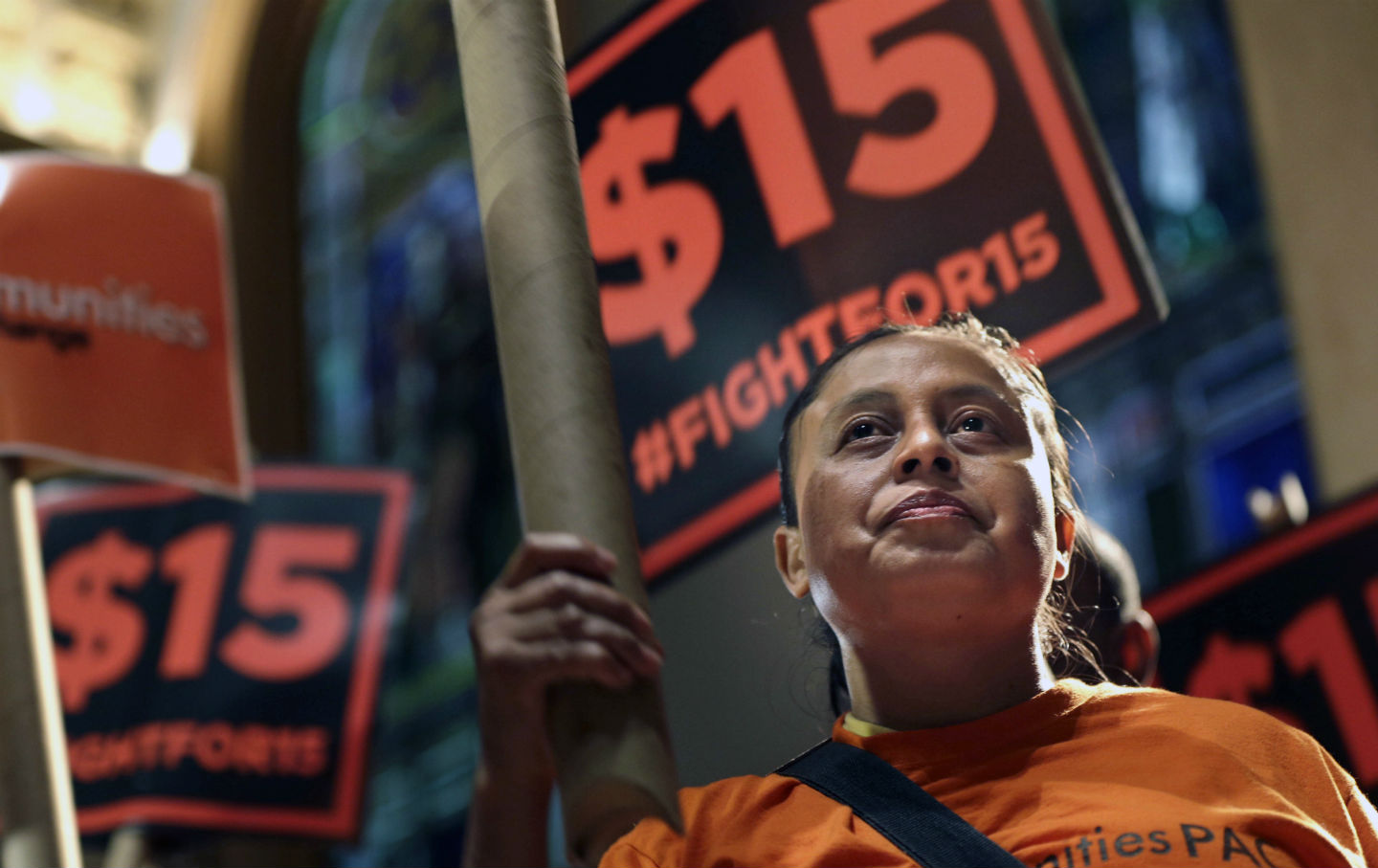
Demonstrators rally for a $15 minimum wage before a meeting of the wage board in New York, Monday, June 15, 2015. (AP Photo / Seth Wenig)
What once was considered “pie in the sky” is slowly becoming law. In New York, state legislators just agreed to raise the state minimum wage to $15 an hour, with the full effect beginning in New York City by December 2018. California just passed a compromise raising the minimum wage to $15 an hour by 2022. New Jersey and the District are planning to move similar laws. After New York and California, nearly 1 in 5 (18 percent) in the US workforce will be on the path to $15 an hour.
Each week we cross-post an excerpt from Katrina vanden Heuvel’s column at the WashingtonPost.com. Read the full text of Katrina’s column here.
How did this reform go from being scorned as “extreme” to being enacted? Consensus politicians don’t champion it. Pundits and chattering heads tend to ignore it. Many liberal economists deride it as too radical. The idea moved only because workers and allies organized and demanded the change.
Three years ago, fast-food workers walked off the job in what began the “fight for $15 and a union.” With the federal government as the largest low-wage employer, federal contract workers demonstrated repeatedly outside the Pentagon, Congress, and the White House, demanding executive action under the banner of a “Good Jobs Nation.”
Read the full text of Katrina’s column here.
Katrina vanden HeuvelTwitterKatrina vanden Heuvel is editorial director and publisher of The Nation, America’s leading source of progressive politics and culture. She served as editor of the magazine from 1995 to 2019.